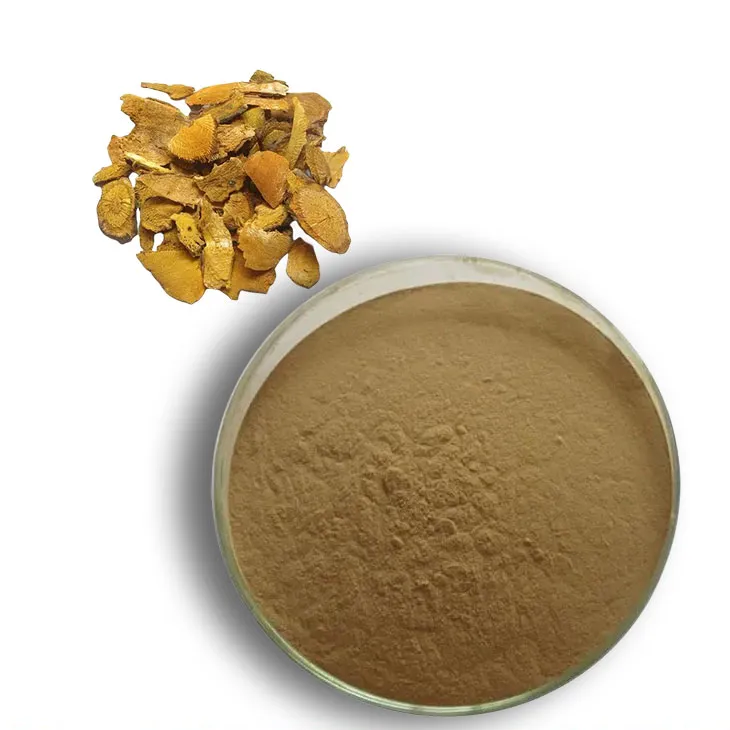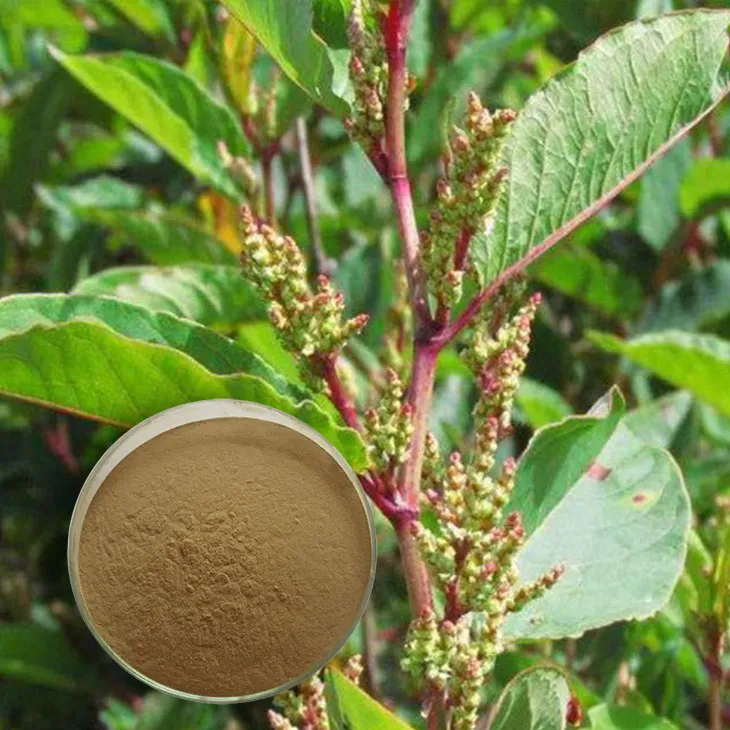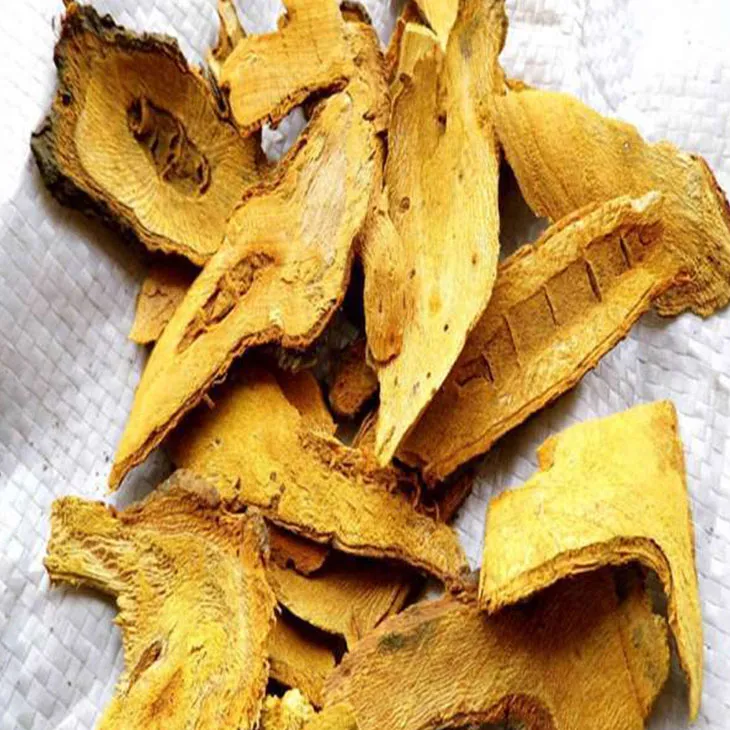- 0086-571-85302990
- sales@greenskybio.com
The process of extracting polygonum cuspidatum anthraquinone from polygonum cuspidatum extract.
2024-11-30

1. Introduction
Polygonum cuspidatum, also known as Japanese knotweed, is a plant rich in various bioactive compounds. Among them, anthraquinone is one of the most important components. Anthraquinone has shown a wide range of pharmacological activities, such as antioxidant, anti - inflammatory, and anticancer properties. Therefore, the extraction of polygonum cuspidatum anthraquinone from Polygonum Cuspidatum Extract has attracted significant attention in the fields of medicine, pharmacy, and natural product research.

2. Significance of Polygonum Cuspidatum Anthraquinone
2.1. Pharmacological Effects
- Antioxidant Activity: Anthraquinone can scavenge free radicals in the body, which helps to prevent oxidative damage to cells. This is crucial for reducing the risk of many chronic diseases, such as cardiovascular diseases and neurodegenerative disorders.
- Anti - Inflammatory Action: It can inhibit the production of inflammatory mediators, thereby alleviating inflammation in the body. This makes it a potential candidate for the treatment of inflammatory diseases like arthritis.
- Anticancer Potential: Some studies have suggested that polygonum cuspidatum anthraquinone may have anticancer properties. It may act on cancer cells by interfering with their cell cycle, inducing apoptosis, or inhibiting angiogenesis.
2.2. Applications in Traditional Medicine
In traditional Chinese medicine, polygonum cuspidatum has been used for centuries to treat various ailments. The anthraquinone content in it is believed to contribute to its medicinal effects. For example, it has been used to treat jaundice, cough, and joint pain.

3. Traditional Extraction Methods
3.1. Soxhlet Extraction
- The first step in Soxhlet extraction is to prepare the sample. The Polygonum Cuspidatum Extract is dried and ground into a fine powder. This increases the surface area of the sample, facilitating the extraction process.
- Then, a suitable solvent, such as ethanol or methanol, is selected. The powdered sample is placed in a Soxhlet extractor, and the solvent is continuously refluxed through the sample for a certain period, usually several hours to a day.
- After the extraction, the solvent containing the anthraquinone is collected, and the solvent is evaporated to obtain the crude anthraquinone extract.
3.2. Maceration
- Maceration is a simple and traditional extraction method. The Polygonum Cuspidatum Extract is soaked in a solvent, such as ethanol, in a closed container for a relatively long time, usually several days to weeks.
- During this period, the solvent gradually penetrates into the plant material, dissolving the anthraquinone. After that, the solvent is filtered to separate the extract from the plant residue.

4. Modern Extraction Techniques
4.1. Supercritical Fluid Extraction (SFE)
- Supercritical fluid extraction uses a supercritical fluid, usually carbon dioxide (CO₂), as the extraction solvent. CO₂ is brought to its supercritical state by adjusting the temperature and pressure.
- In the supercritical state, CO₂ has properties similar to both a gas and a liquid, which allows it to effectively penetrate into the polygonum cuspidatum extract and dissolve the anthraquinone.
- The advantage of SFE is that it is a clean and environmentally friendly extraction method. It can also provide high - purity extracts with relatively short extraction times. After the extraction, the pressure is reduced, and the CO₂ returns to its gaseous state, leaving behind the extracted anthraquinone.
4.2. Ultrasonic - Assisted Extraction (UAE)
- Ultrasonic - assisted extraction utilizes ultrasonic waves to enhance the extraction process. When ultrasonic waves are applied to the mixture of polygonum cuspidatum extract and solvent, cavitation bubbles are formed.
- These cavitation bubbles collapse, creating local high - pressure and high - temperature zones. This helps to break the cell walls of the plant material, facilitating the release of anthraquinone into the solvent.
- Compared with traditional extraction methods, UAE can significantly reduce the extraction time and improve the extraction efficiency.
4.3. Microwave - Assisted Extraction (MAE)
- Microwave - assisted extraction uses microwaves to heat the solvent and the polygonum cuspidatum extract simultaneously. Microwaves can directly interact with polar molecules in the sample, causing rapid heating.
- This rapid heating can disrupt the cell structure of the plant, accelerating the extraction of anthraquinone. MAE is also a relatively fast extraction method, and it can be well - controlled by adjusting the microwave power and extraction time.
5. Factors Influencing Extraction Efficiency
5.1. Solvent Selection
- The choice of solvent is crucial for the extraction of anthraquinone. Solvents with different polarities have different extraction capabilities. Ethanol and methanol are commonly used solvents due to their relatively good solubility for anthraquinone and their ability to penetrate plant cells.
- However, the polarity of the solvent should be carefully matched with the nature of the anthraquinone. For example, if the anthraquinone has a relatively high polarity, a more polar solvent may be more suitable.
5.2. Extraction Time
- Extraction time has a direct impact on the extraction efficiency. In traditional extraction methods like Soxhlet extraction and maceration, longer extraction times are usually required to ensure sufficient extraction of anthraquinone.
- However, in modern extraction techniques such as UAE, MAE, and SFE, shorter extraction times can often achieve relatively high extraction efficiencies. But if the extraction time is too short, the extraction may be incomplete.
5.2. Extraction Temperature
- Temperature also plays an important role in the extraction process. In general, an appropriate increase in temperature can enhance the solubility of anthraquinone in the solvent and accelerate the mass transfer process.
- However, if the temperature is too high, it may cause the degradation of anthraquinone or other components in the polygonum cuspidatum extract. For example, in some solvents, high temperatures may lead to the evaporation of the solvent too quickly, affecting the extraction efficiency.
6. Purification of Extracted Anthraquinone
6.1. Column Chromatography
- Column chromatography is a commonly used method for purifying anthraquinone. A suitable stationary phase, such as silica gel or alumina, is packed into a column.
- The crude anthraquinone extract is dissolved in a solvent and loaded onto the top of the column. Then, a mobile phase with different polarities is used to elute the anthraquinone. Different components in the extract will be separated based on their different affinities for the stationary and mobile phases.
6.2. Recrystallization
- Recrystallization is another simple and effective purification method. The crude anthraquinone extract is dissolved in a hot solvent until it reaches saturation.
- Then, the solution is slowly cooled, and the anthraquinone will crystallize out. The impurities will remain in the solvent, thus achieving the purification of anthraquinone.
7. Quality Control of Extracted Anthraquinone
7.1. Identification of Anthraquinone
- Various spectroscopic methods can be used to identify anthraquinone, such as ultraviolet - visible spectroscopy (UV - Vis), infrared spectroscopy (IR), and nuclear magnetic resonance spectroscopy (NMR). These methods can provide information about the chemical structure of anthraquinone, ensuring its correct identification.
7.2. Determination of Purity
- High - performance liquid chromatography (HPLC) is a widely used method for determining the purity of anthraquinone. By comparing the peak area of anthraquinone with that of other components in the sample, the purity of anthraquinone can be accurately calculated.
8. Conclusion
The extraction of polygonum cuspidatum anthraquinone from polygonum cuspidatum extract is a complex but important process. Different extraction methods, each with their own advantages and disadvantages, can be used depending on the specific requirements. Factors such as solvent selection, extraction time, and temperature need to be carefully considered to ensure high - efficiency extraction. Purification and quality control are also essential steps to meet the requirements of different applications. With the continuous development of extraction techniques and the in - depth research on polygonum cuspidatum anthraquinone, it is expected that more efficient extraction methods and better - quality products will be obtained, which will promote the further utilization of polygonum cuspidatum resources in various fields.
FAQ:
What is the significance of polygonum cuspidatum anthraquinone?
Polygonum cuspidatum anthraquinone has various important significance. It may have certain pharmacological activities, such as antioxidant, anti - inflammatory, and antibacterial properties. It can also be potentially used in the development of drugs or in the field of cosmetics for its beneficial effects on human health or product performance.
What are the traditional extraction methods for polygonum cuspidatum anthraquinone?
Traditional extraction methods may include maceration. In maceration, the polygonum cuspidatum extract is soaked in a solvent for a long time to allow the anthraquinone to dissolve into the solvent. Another traditional method could be decoction, where the extract is boiled in water or a solvent mixture for a certain period to extract the anthraquinone.
What are the modern extraction techniques for polygonum cuspidatum anthraquinone?
Modern extraction techniques often involve more advanced methods. For example, ultrasonic - assisted extraction uses ultrasonic waves to disrupt the plant cells and enhance the mass transfer rate, thus improving the extraction efficiency of anthraquinone. Supercritical fluid extraction is also a modern technique, which uses supercritical fluids like supercritical CO2 as solvents, having advantages such as high selectivity and less environmental pollution.
How does solvent selection influence the extraction of polygonum cuspidatum anthraquinone?
The choice of solvent is crucial. Different solvents have different solubility properties for anthraquinone. Polar solvents may be more suitable for extracting polar anthraquinone compounds, while non - polar solvents may be better for non - polar components. For example, ethanol, a relatively polar solvent, can dissolve a wide range of anthraquinone derivatives effectively. Solvents also need to be considered in terms of their safety, cost, and ease of separation from the extract.
Why is purification important for the extracted polygonum cuspidatum anthraquinone?
Purification is essential because the initial extract may contain various impurities along with the anthraquinone. These impurities can interfere with the accurate study of the properties and functions of anthraquinone. In addition, for applications in medicine or high - quality cosmetics, purified anthraquinone is required to meet strict quality and safety standards. Purification can also improve the stability and effectiveness of the anthraquinone product.
Related literature
- Optimization of the Extraction Process of Anthraquinones from Polygonum cuspidatum"
- "Study on the Quality Control of Polygonum cuspidatum Anthraquinone Extracts"
- "Advanced Extraction Technologies for Polygonum cuspidatum Anthraquinone"
- ▶ Hesperidin
- ▶ citrus bioflavonoids
- ▶ plant extract
- ▶ lycopene
- ▶ Diosmin
- ▶ Grape seed extract
- ▶ Sea buckthorn Juice Powder
- ▶ Beetroot powder
- ▶ Hops Extract
- ▶ Artichoke Extract
- ▶ Reishi mushroom extract
- ▶ Astaxanthin
- ▶ Green Tea Extract
- ▶ Curcumin Extract
- ▶ Horse Chestnut Extract
- ▶ Other Problems
- ▶ Boswellia Serrata Extract
- ▶ Resveratrol Extract
- ▶ Marigold Extract
- ▶ Grape Leaf Extract
- ▶ blog3
- ▶ blog4
-
Extraction process of bilberry extract.
2024-11-30
-
Manufacturers of Euphrasia Extract.
2024-11-30
-
Chinese peppermint oil powder factories.
2024-11-30
-
The best green tea extract on the market.
2024-11-30
-
Nature's Bounty Okra Extract.
2024-11-30
-
Chinese Oyster Peptide Powder Factories.
2024-11-30
-
Scutellaria Extract
2024-11-30
-
Beetroot Powder
2024-11-30
-
Almond Extract Powder
2024-11-30
-
Withania Somnifera Extract
2024-11-30
-
Jujube Extract
2024-11-30
-
Medicinal Marshmallow Extract
2024-11-30
-
Genistein
2024-11-30
-
Epimedium extract powder
2024-11-30
-
Beetroot juice Powder
2024-11-30
-
Sophora Flavescens Root Extract
2024-11-30





















